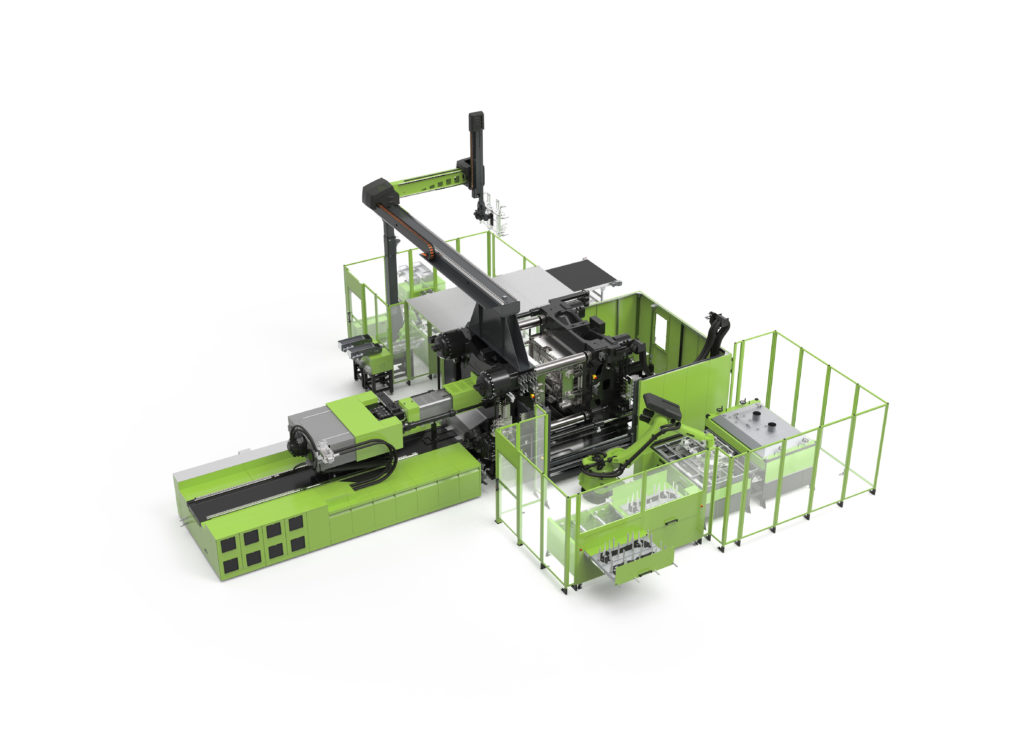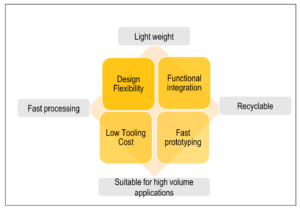Pay attention to load requirements – Understanding load requirements is important for controlling material cost and mass. If a critical load path can be addressed using 2 mm thick organosheet based on a complex NCF fabric, or by a thicker organosheet based on woven fabric, the more expensive NCF organosheet might lead to a more cost-effective and mass-saving solution overall. Organosheets with localized unidirectional tape reinforcement are elegant solutions as well and can help balance the cost/mass equation.
Use simulations and check all assumptions – Use simulations as early as possible to optimize a design. Today, software providers can guide you through functionalities designed specifically for organosheets, making the screening very approachable. To get accurate results, it is important to understand and to leverage the orthotropy of these materials (unique behavior in x, y and z directions). For example, while an organosheet based on 2/2 twill or plain weave fabric shows similar performance in two directions (warp and weft), the assumption of isotropy will be incorrect.
Jiuheng Chen, design engineer at Forward Engineering GmbH, illustrates this very simply. If the organosheet would be isotropic, the shear modulus could be calculated using the elastic modulus and Poison’s ratio as E/2(1+n) = 24,000/2(1+0.15) = 10,435 MPa. In reality, the material is orthotropic, exhibits a shear modulus of ~3,200 MPa and should be modeled accordingly.
Reach out to your network – Use the collaborative environment in the composites industry value chain. Providing composite solutions requires a solid understanding of materials, processes, design and manufacturing cost. A good network of partners can help obtain answers to questions early on and focus on solutions most likely to succeed.
While the cornerstone characteristics of organosheets – light weight, recyclability, fast processability and suitability for high-volume applications – are highlighted more often, at the core of their accelerated adoption are key properties that enable high-volume industries to offer new products faster, to personalize models and to incorporate multiple design features.
Organosheets enable a great deal of functional integration, from brackets and metal insets to sensors and electromagnetic interference shielding solutions. Thermoplastic solutions centered on organosheets are easy to prototype and result in significant reduction of parts, lower tooling costs and scalability to high volume. The core advantages of organosheets will bring the most value to an application.




